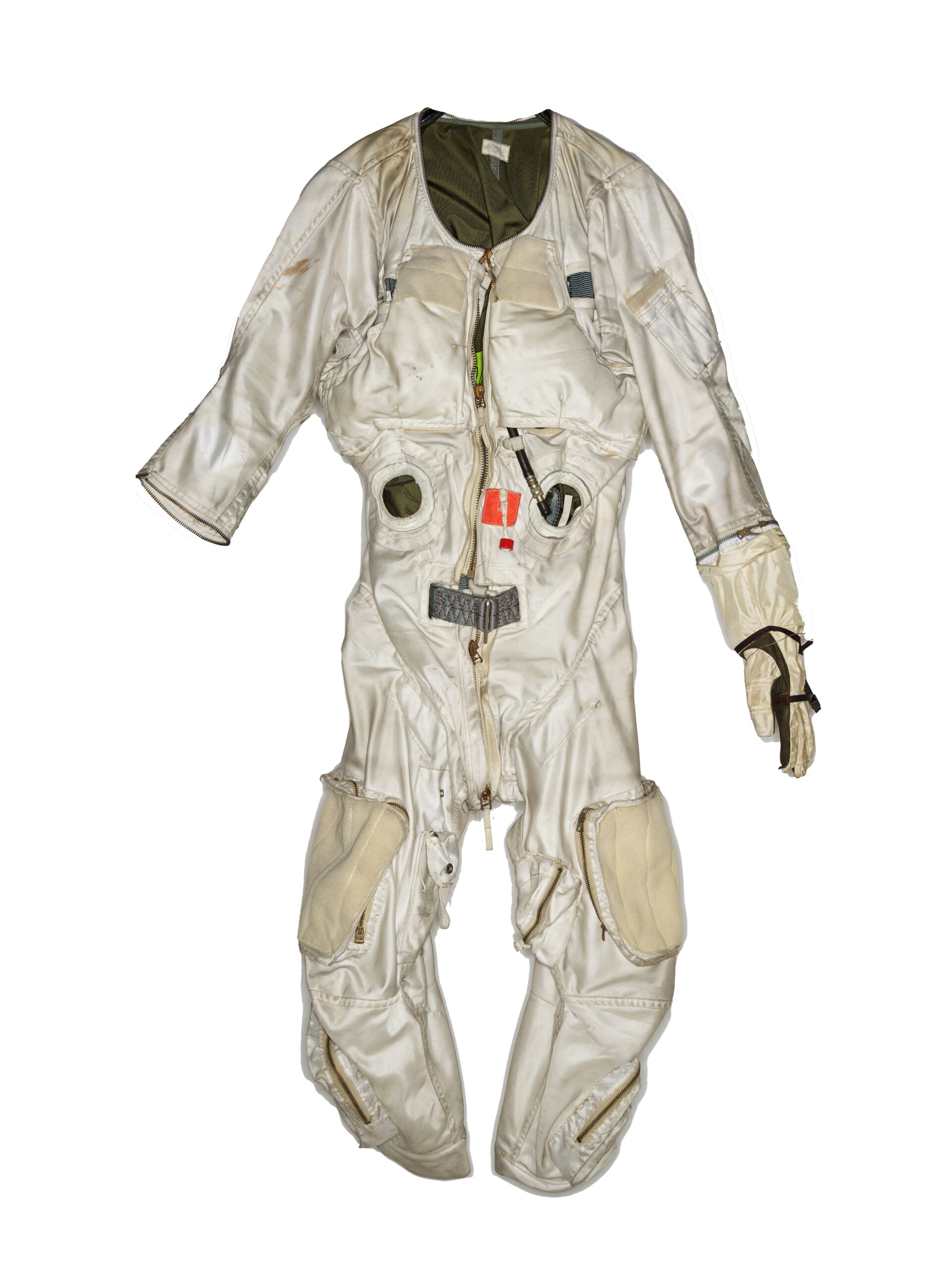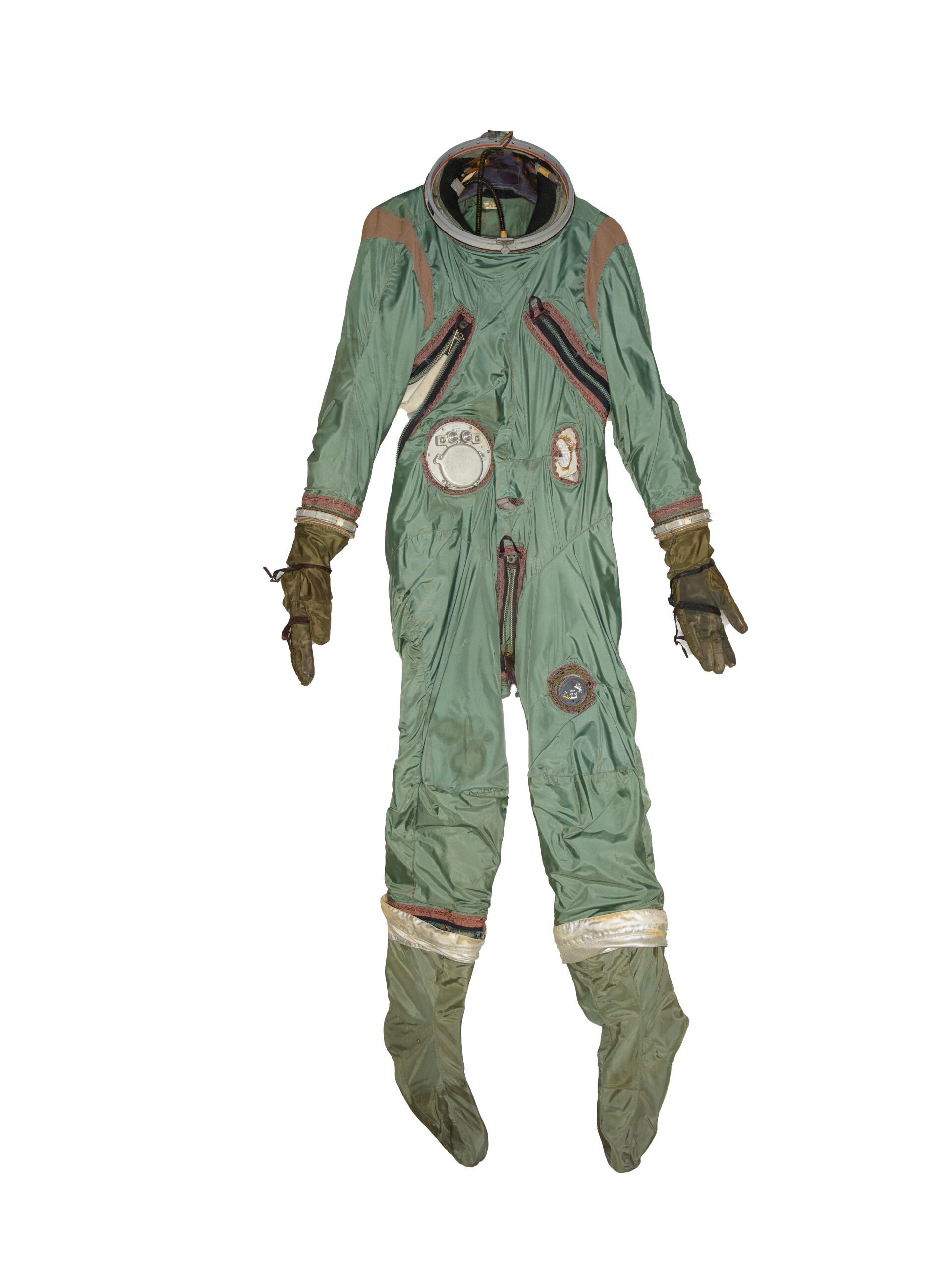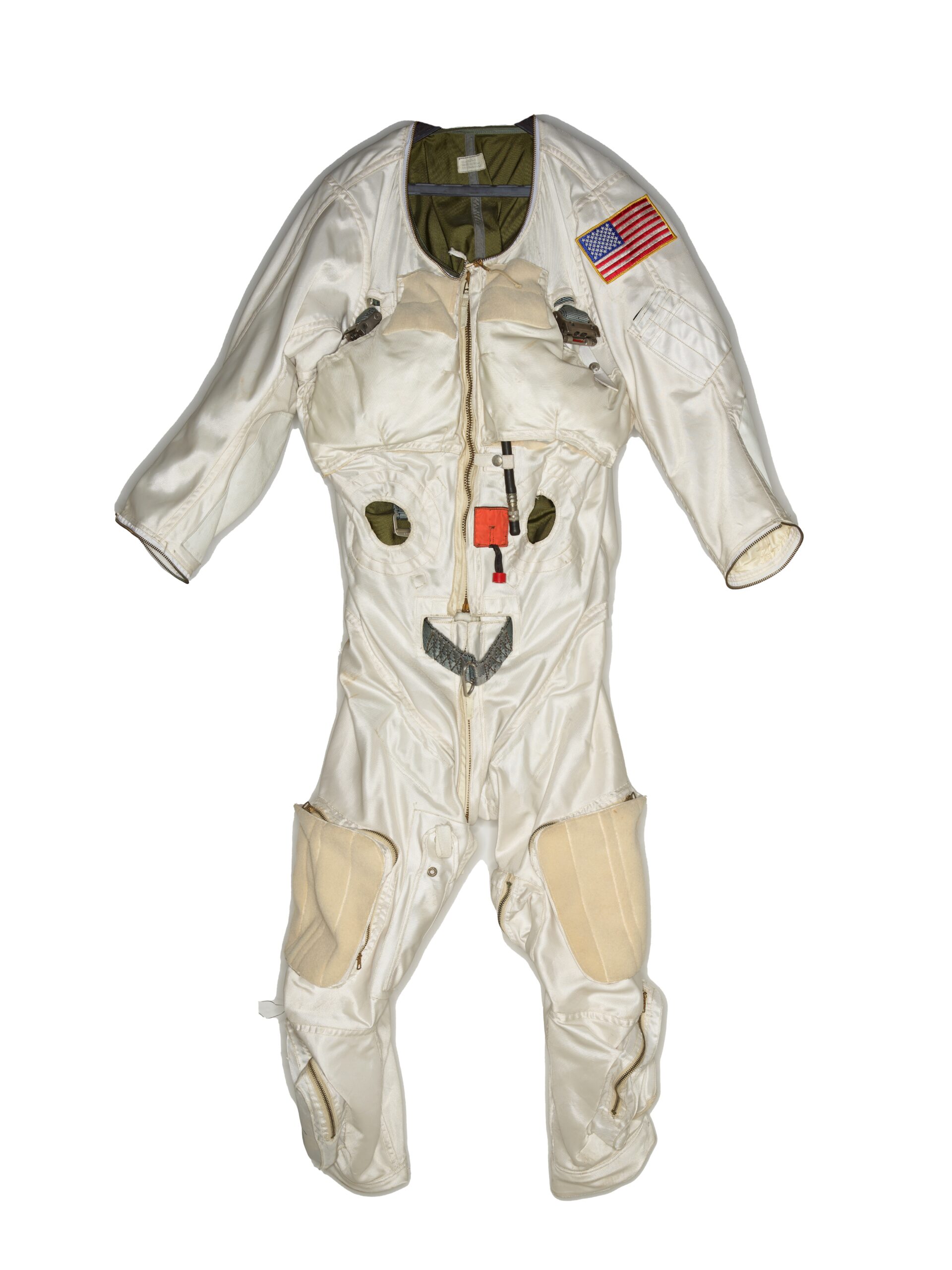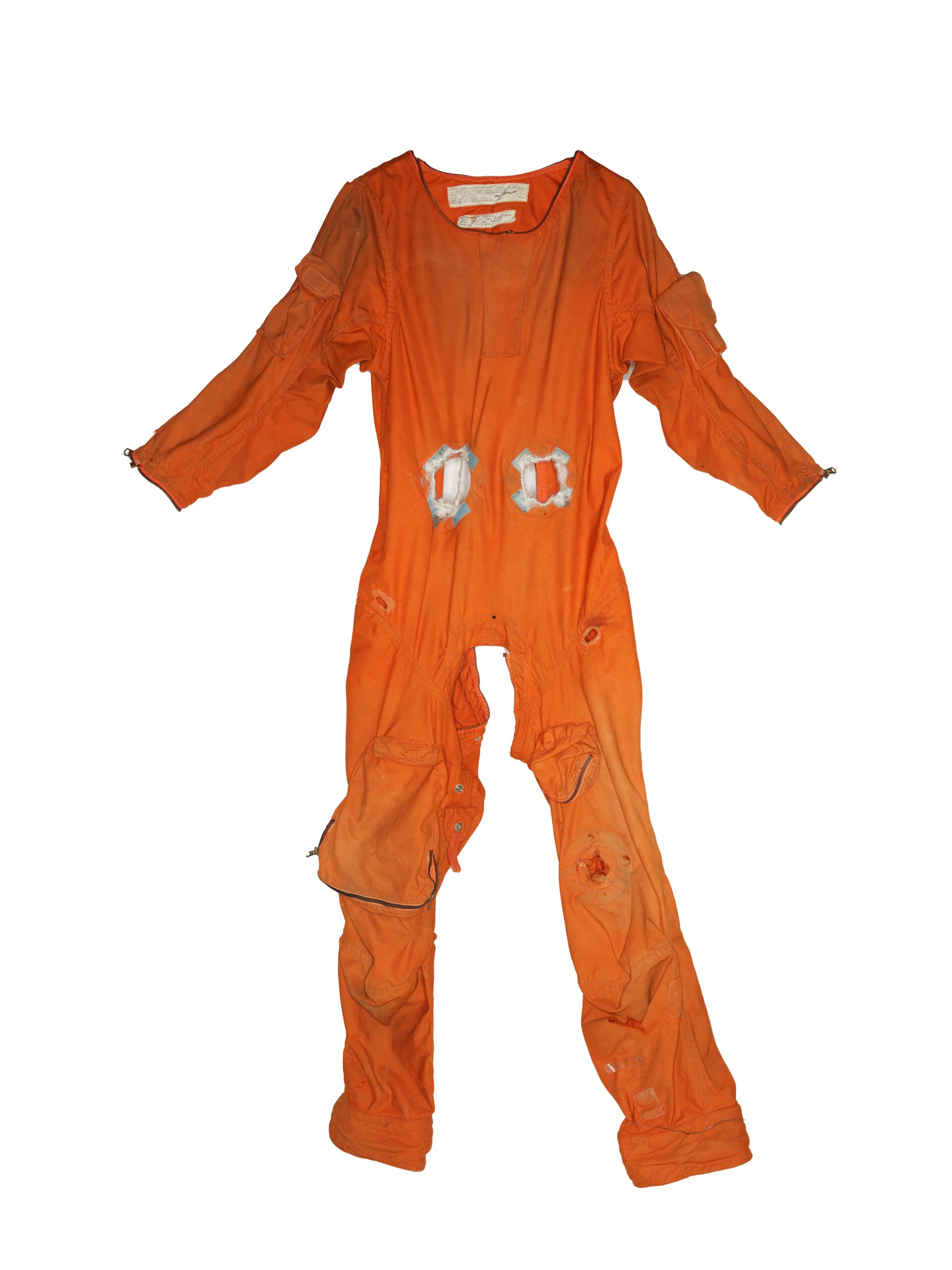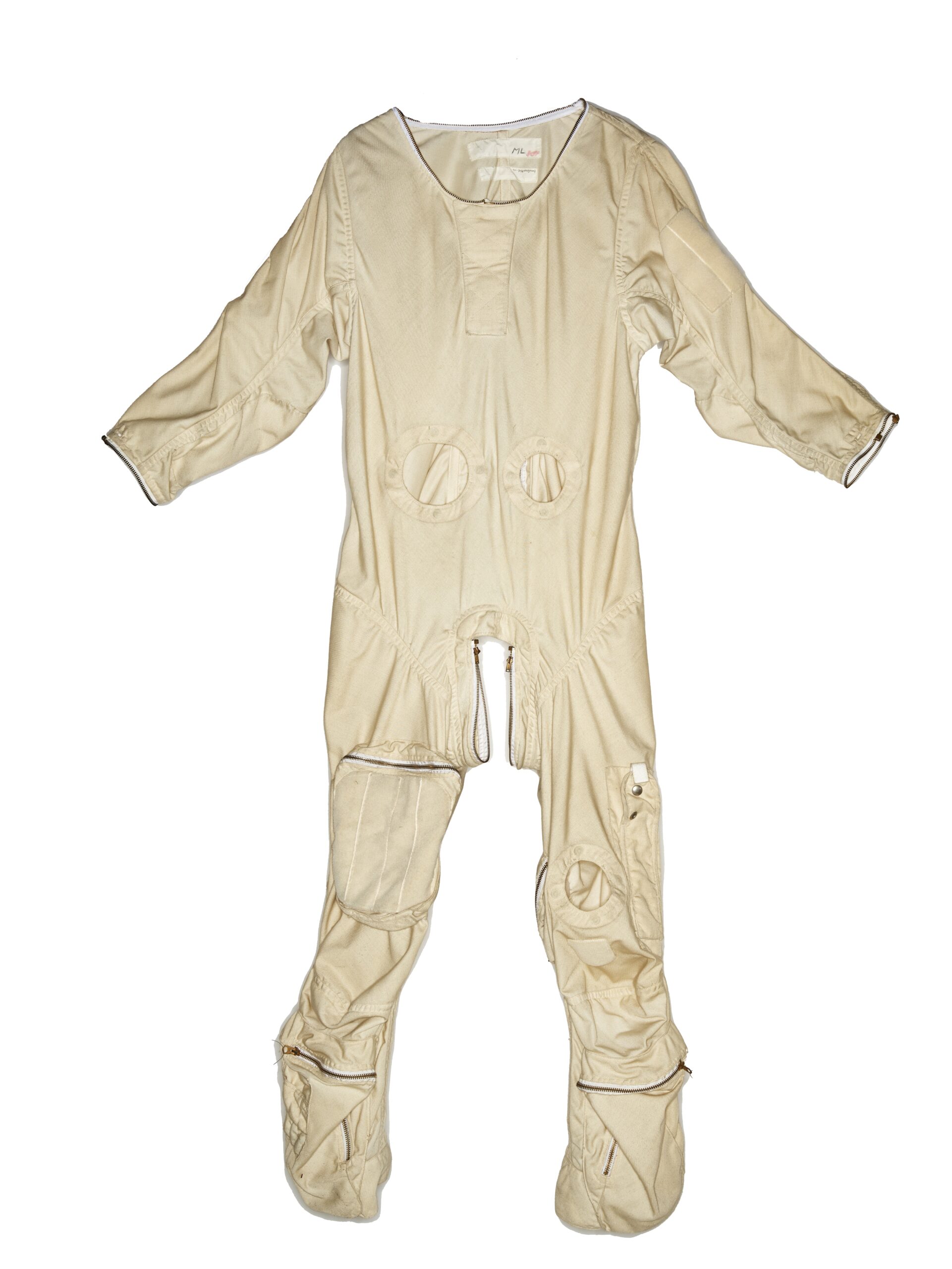A/P 22S-2 Full Pressure Suit
Operational 1960. The David Clark XMC-2-DC prototype, although still in need of substantial development, evolved into the MC-2 suit and then into a standardized Air Force high altitude, full pressure garment known as the A/P 22S-2.
This provided greater mobility than the Goodrich A/P22S-3 full pressure suit. 4 layers, 8 sizes, suit controller, oxygen regulator inside helmet, outer layer nylon/polyurethane, Dacron link net restraint second layer, third layer silicon impregnated nylon / neoprene pressure bladder, inner fourth diffusion layer was oxford weave. Many variants, used in bombers, the X-15, and other high altitude aircraft.
Concurrent with USAF decision to develop the A/P22S-2 from the MC-2 suit, the US Navy’s final Mark IV suit was determined to be compatible with US Air Force aircraft cockpits as an interim suit, after certain changes had been made to it. This suit was accepted as a limited production Air Force FPS designated the A/P22S-3 model, and was intended for use until the A/P22S-2 model was finally found to be ready for standardization. Interestingly, the A/P22S-2 suit was regarded by most as the direct precursor design inspiration for NASA’s Gemini mission suits, while the US Navy Mark IV suit was the precursor inspiration for the first US orbital (Project Mercury) space suits used in the original American space flights.




